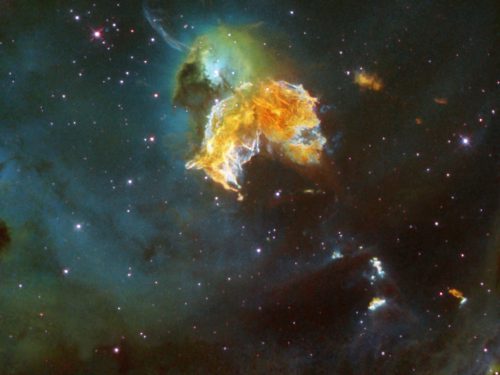CITIZEN scientists have been invited to join the search for exploding stars, also known as supernovae, alongside Australian National University’s scientists.

Co-lead researcher Dr Brad Tucker says: “With the power of the people, we can check these images in minutes and get another telescope to follow up.”
Astrophysicists use supernovae, which are explosions as bright as 100 million billion billion billion lightning bolts, as light sources to measure the universe and acceleration of its growth.
Dr Tucker says scientists can measure the distance of a supernova from Earth by calculating how much the light from the exploding star fades.

“We can then use that information to better understand dark energy, the cause of the Universe’s acceleration.”
Co-lead researcher Dr Anais Möller says SkyMapper is taking thousands of new images of the southern sky every month for the supernova search project.
“The first people who identify an object that turns out to be a supernova will be publicly recognised as co-discoverers,” says Dr Möller.
“SkyMapper is the only telescope that is doing a comprehensive survey of the southern sky looking for supernovae and other interesting transient events at these distances.
“We are examining an area 10,000 times larger than the full moon every week. As well as finding Type Ia supernovae, which we use to measure how the Universe is expanding, we will also find other types of supernovae that change in brightness with time – ranging from a couple of weeks to months.
“If we discover supernovae early we have a good chance of understanding them, as well as having better measurements for the expansion of the Universe.”
SkyMapper is a 1.3-metre telescope that is creating a full record of the southern sky for astronomers.
Participate via zooniverse.org/projects/
Who can be trusted?
In a world of spin and confusion, there’s never been a more important time to support independent journalism in Canberra.
If you trust our work online and want to enforce the power of independent voices, I invite you to make a small contribution.
Every dollar of support is invested back into our journalism to help keep citynews.com.au strong and free.
Thank you,
Ian Meikle, editor




Leave a Reply